How to Use Kong Toys to Help Enrich Your Dog’s Life (And Improve Behavior)
This post contains affiliate links. These won’t cost you anything, but the commissions we may earn through them help offset the cost of dog treats. Thanks for your support!
A stuffed Kong toy can be a great tool to keep your dog busy and to help you teach your dog important skills. But with all the recipes on Pinterest and the blogosphere, it can be kind of a pain to figure out what works. And even after all that effort, your dog may just be like, “meh.”
Look: I’m a big advocate of the KISS principle, or “keep it simple, stupid.” There’s no need to overcomplicate things, and in my opinion, most of the products and recipes out there complicate a very simple idea. Another big concept you’ll hear several times is that it’s not what it is; it’s what you train it to be. If your dog isn’t into it, we don’t give up and move on to the next gimmick. We train them to be into it. We train them to love it. Ready to do that? Let’s dive in.
Selecting the Right Toy
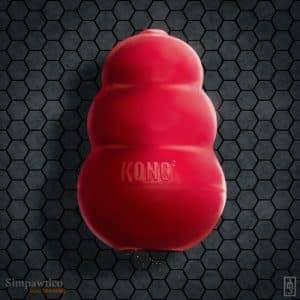
Selecting the appropriately sized Kong toy is as easy as heading to the pet supply store and picking some out. There are some details to keep in mind, though.
Go Bigger
For one thing, Kong toys don’t hold as much as you think they do. My rule of thumb is to pick the one that looks right and then buy the next size. For example, my bulldog eats three cups of kibble daily, and it would take four large Kongs to hold that much. Additionally, I’ve seen dogs give up out of frustration if they can’t get it easily enough. One size up will make for a bigger hole and (at least in my experience) help them buy into it more readily.
Get Several
That leads us to the Second point: don’t buy just one. Get four at the minimum. That way, you have them on reserve to fill, use, wash, and rotate them. Otherwise, you’ll get caught without one ready when you need it if you’re not paying attention.
Only Kong?
The Red Classic Kongs are pretty standard. The Extreme black ones are the toughest for super chewers. All the other colors are about the same as the red ones regarding toughness, except for the puppy Kong which is fairly pliable.
Also, there are several types of toys like it; the Classic Kong isn’t the only one out there. Both the PetSafe Barnacle and the PetSafe Squirrel Dude are also very good. The Kong Biscuit Ball and toys like it can be used with a raw diet. The Premier Busy Buddy Football works well for treats or cheese sticks; you can use this for short settle-downs. Take a look at our curated list on Amazon for more examples.
All the toys listed above are dishwasher safe, making them easy to sterilize and keep clean. Any of these will work for the strategies I’m talking about in this article. The Kong, however, is undoubtedly the best-made, most durable, and most readily available.
The Stuffed Kong 101
Let’s learn effective ways to make a stuffed Kong.
First, forget about buying any of the stuff marketed in the pet stores to stuff a Kong. Pet store Kong filler is overpriced junk food, just like the human version. Seriously is that stuff even food?
Kong Recipes Galore
Second, as I said, there are tons of Kong stuffing recipes out there for all sorts of creative Kong stuffing ideas. These are for sure a much better alternative. However, they’re time-consuming and also largely unnecessary. Go for it if you enjoy it and have the time for it. There’s nothing wrong with it. However, don’t get into those bigger recipes unless you enjoy doing them. As a special treat on occasions, they’re great. I’ve seen some summer recipes with blueberries and yogurt that are fabulous.
Do not fall into the trap of trying to up the ante by increasing the value of the stuffing in the toy to try and get your dog interested. You’re coming at it backward. It’s not what it is; it’s what you’ve trained it to be. TRAIN the dog to love their Kong, and then you can stuff it with whatever you want.
Again, it’s not what it is; it’s what you’ve trained it to be.
With this in mind, you’ll save money and time, AND you’ll train your dog better if it’s filled with a more commonplace ingredient: their own dog food: dry kibble, wet food, or dehydrated dog food (raw) work best. If your dog has dietary concerns where you’re using canned pumpkin or sweet potato, these can be included too.

Since you’ll be using our dog’s food, you’ll need to measure it out. As a responsible owner, you should monitor their daily food intake by having a routine but flexible feeding schedule and never free-feeding. Free feeding is just shooting yourself in the foot regarding behavioral teaching. Don’t be lazy! You’re also starting to empower their normal food as a training reward by simply plugging it into your dog’s daily routine feedings. It is a much better, more nutritionally balanced option than only using treats. This plays into our Strategic Reward Scaling article.
-
Measure out your dog’s food for the day.
-
Set aside about a third of the food.
-
Moisten the remaining two-thirds (unless you’re using fresh or canned dog food), and spoon it into the toys. You don’t want to soak it; otherwise, it’ll turn into a brick in the freezer. Just a little moisture is all you need.
-
Then, stick it in the freezer for a few hours.
That leftover third is used for training. Anyone in the family can take food out for training with this. If you plan and prepare three or four frozen Kongs at a time, they’ll be on demand as needed. Just be sure to keep up with the rotation. You don’t want to be caught without any toys in the freezer and a hungry dog.
Deploying Stuffed Toys
Dogs will take their meals from the toy when we first start stuffed Kong toy training. A bowl is nice and convenient, but it’s a waste of opportunity in these stages. Save the bowl for down the road after we’ve got them hooked on their Kong.
When you take a loaded Kong out of the freezer, place a dollop of something easy and tasty to start with over the big hole. Just smear some natural peanut butter, plain yogurt, or cream cheese over it. Now, they take their Kong meals in a crate or on a bed. Same place every time. Routines are the backbone of training.
As the dogs work at it, the Kong thaws fairly quickly, and food starts to fall out. The more they work, the more food they get. This is a self-rewarding activity. It’s called “autoshaping” because your dog is practically training himself now. All you did was engineer it to work and set it up.
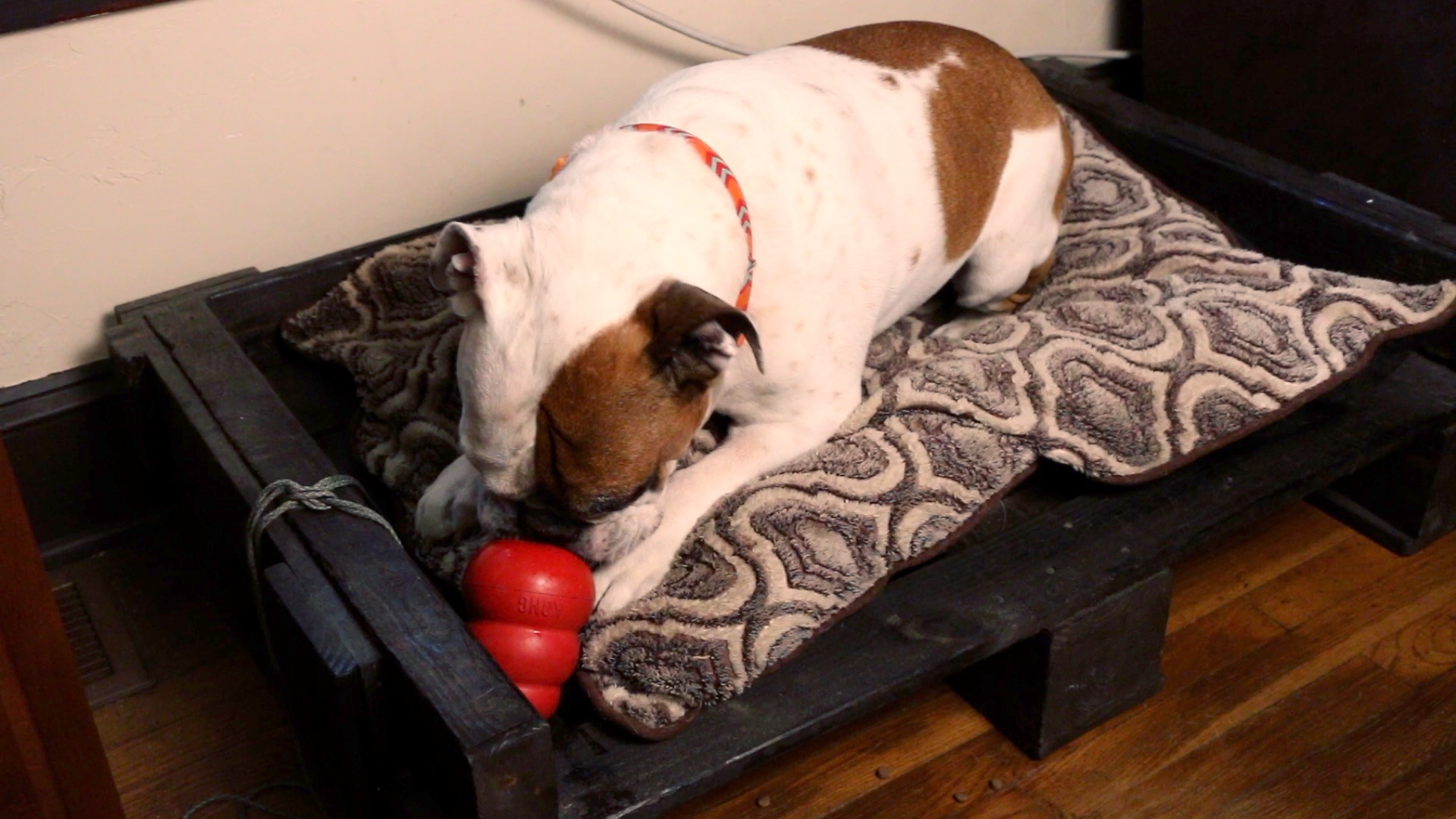
Right from the get-go, this is conditioning the dog to love being alone. Chewing and eating simultaneously releases a payload of endorphins into their brain like a huge pleasure bomb. As we progress—as your puppy gets older or your adult dog picks up the skill—we can go back to using the bowl and keep the food-filled Kong as the ace up your sleeve.
Benefits When You Stuff a Dog Kong
Stuffed Kongs (or any similar hollow toy) can be used in many ways. Job #1 is that it helps teach a dog to be alone. It keeps a dog busy by giving them something functional and satisfying to do at certain times. This ONE thing then solves a bunch of other problems, like:
-
Boredom, which always leads to mischief.
-
Barking incessantly while you’re away; your neighbors will appreciate this.
-
Destructive chewing, such as your table legs and futon cushions.
-
Raiding the trash.
-
Isolation distress, which is commonly mistaken for separation anxiety.
-
and of course, true separation anxiety, which can be debilitating for a dog.
Training with an interactive toy like a Kong will also help you with the following:
-
Contributing to keeping your dog mentally stimulated.
-
Settling down after being jazzed up.
-
Crate training and Potty training for both puppies and newly adopted adult dogs (especially in crate training games like “the Bait Locker”).
Stuffing a Kong won’t do all of these by itself. You need some regular chew toys, and you need to interact with your dog in other constructive ways. A properly stuffed, healthy Kong will act as a force multiplier and help you do the job much faster.
Further Devious Uses
Attaching an anchor to a Kong gives you more options. Feed a string or rope through the small hole. Knot it and pull it tight. When you fill it, the anchor will be frozen in place. Once the toy and their normal food is empowered, it can be:
-
Tied to the inside of crates for crate training.
-
Tied to trees in the yard for summer fun.
-
Pulled out in emergencies to help contain and calm a dog if they’re overly jazzed up when people come over or even during thunderstorms.
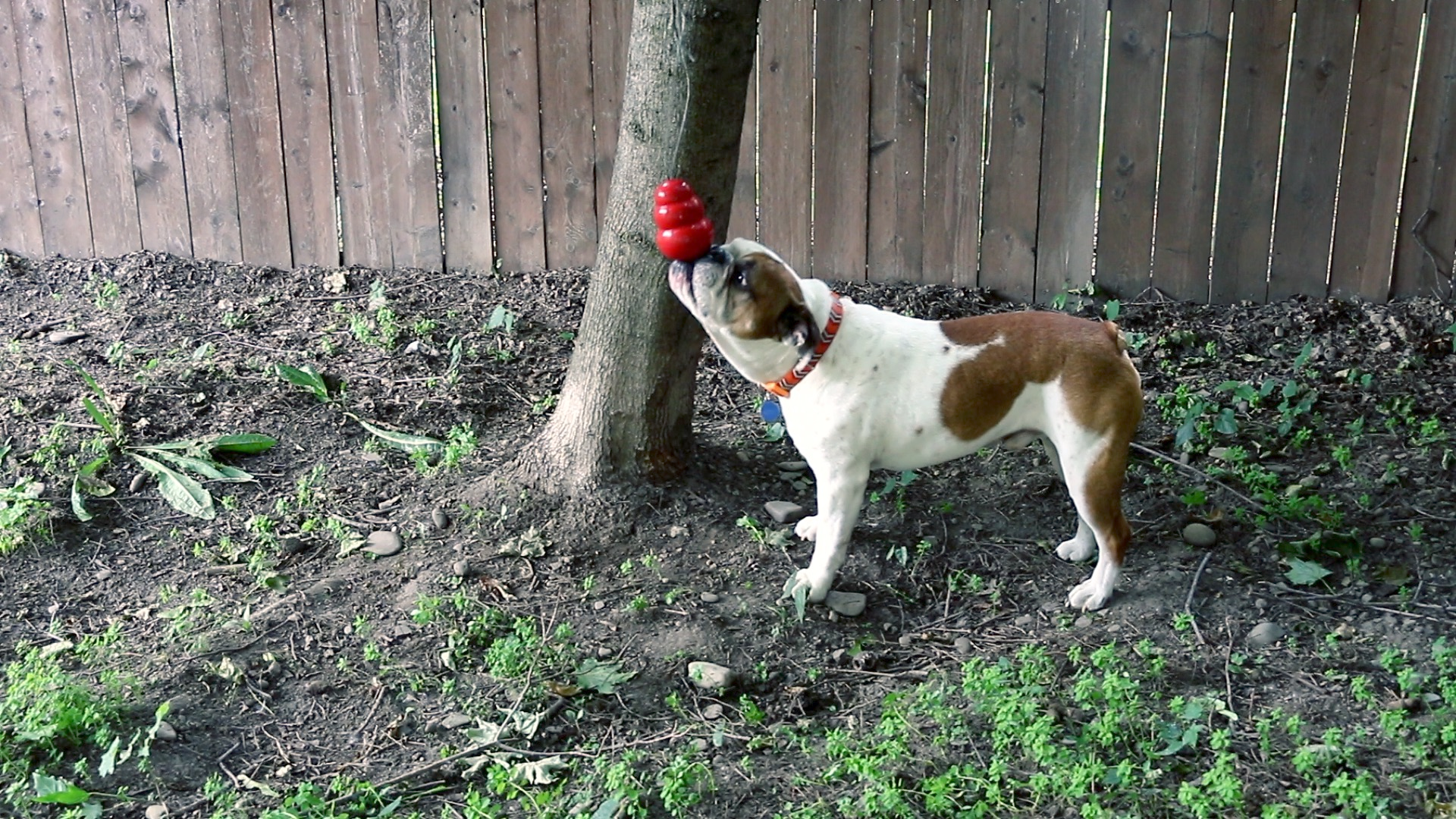
Once you’ve hooked your dog on a Kong, many work-to-eat possibilities open up. Coupled with the chew toy training we discussed in the Four Types of Toys Video, you solve about 90% of the most common daily behavior problems.
OK, questions for you: What are some other ways you’ve used a Kong? And what kinds of questions do you have about it? Let’s connect in the comments!
Don’t forget to check below for links and resources and give a thumbs up the video on YouTube if you got some good info. As always: keep learning, keep practicing, and we’ll talk again. Thanks for reading!


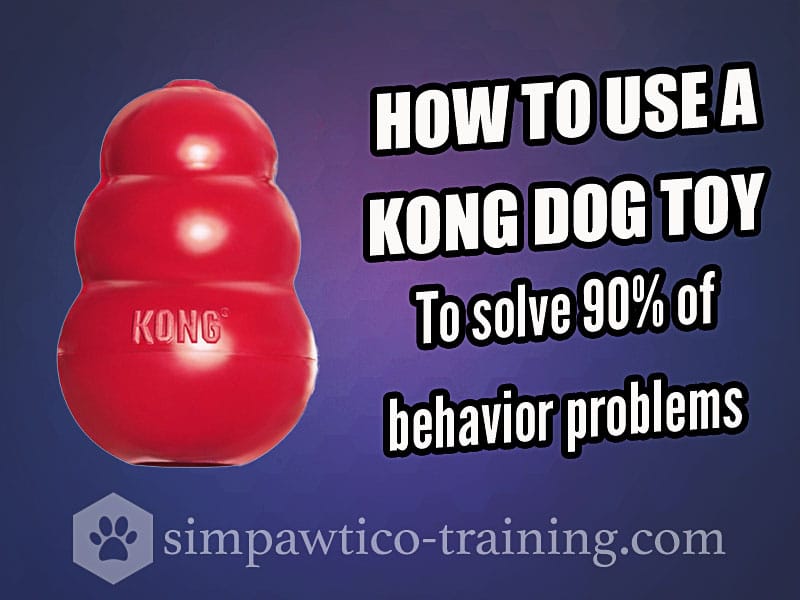
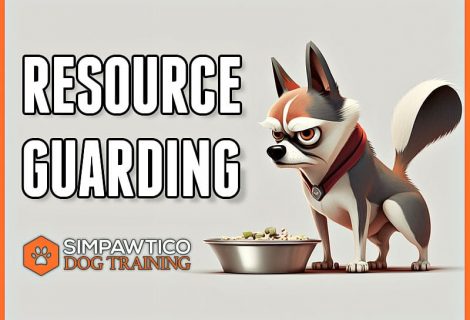
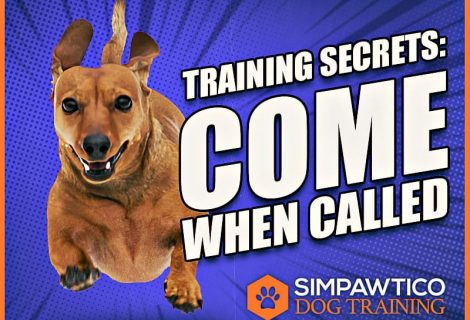


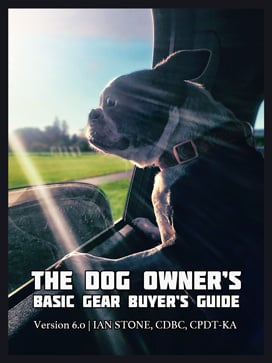


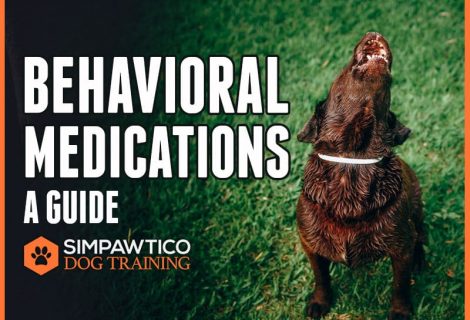
Hi Ian- we just started doing this with our puppy. However I feel like he can’t get all the food out. We got the large and the XXL so the whole was super big but he still can’t get it all out of either one. To troubleshoot this we stick a knife in it to mix it up for him when he can’t get the rest. When he can’t get the food he gets disengaged with it and I get worried that he’s not going to get enough to eat. Any solutions to this? Thank you!
Hi Kendal! Great question and a common conundrum. In these cases we definitely don’t want the dog to get too frustrated, so you may experiment with not moistening or freezing it so the dry food just tumbles out. You may also use less water so it’s not as stuck together when you freeze it. You may also want to take a look at my longer Work-to-Eat video for more on this (or more ideas).
Hey! Thanks for all the great content 🙂 I have a question regarding the kong. How often should I give my puppy a kong when used for feeding? Three times (like if it were three meals in a bowl) or more and divided over the day?
thanks a lot!
Hi Fred. It depends on what your training needs are. You absolutely could replace all feedings in the day with work-to-eat toys likes this. You could stagger the timing to coincide with crate or pen time, etc. But the short answer is that there is no limit to how you use it. Just monitor the overall food intake like normal, but use it how you see fit to accomplish what you need.
What size/weight are your dogs and which kong size you use for each of them?
Hi Alessandra.
Currently (2019) their weights are 55lbs, 40lbs, 16lbs, and 12 lbs. We use Large and Med. On the PetSafe Barnacle (another one of our favorites) we use all three sizes they have available.
Hope that helps!
Our dogs range from about 12 pounds up to 55. We actually have from XS up to XL so we can do different kinds of things with them, depending on what we want or need that day. We like to keep things interesting for them!